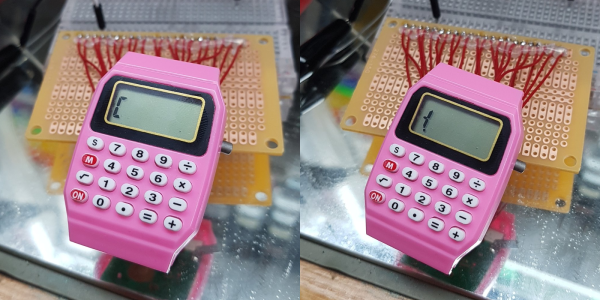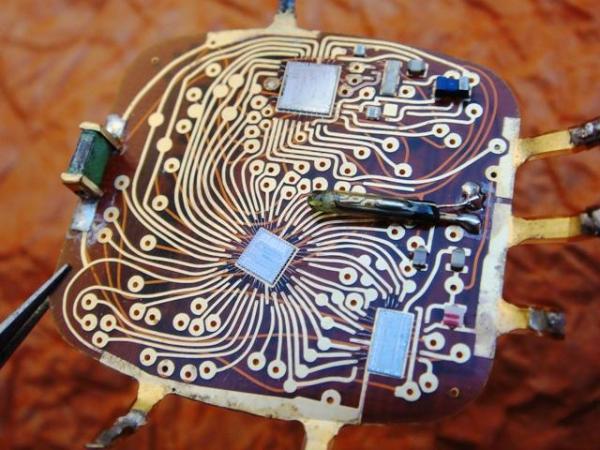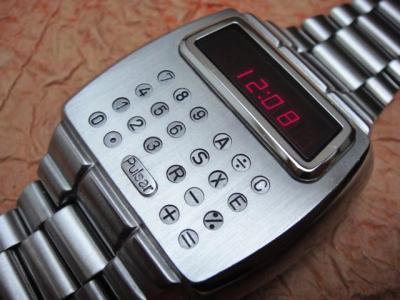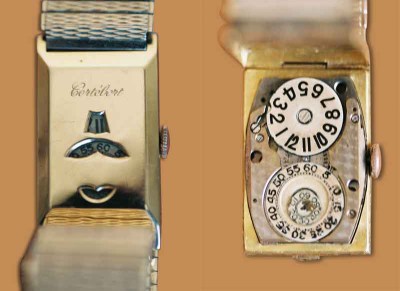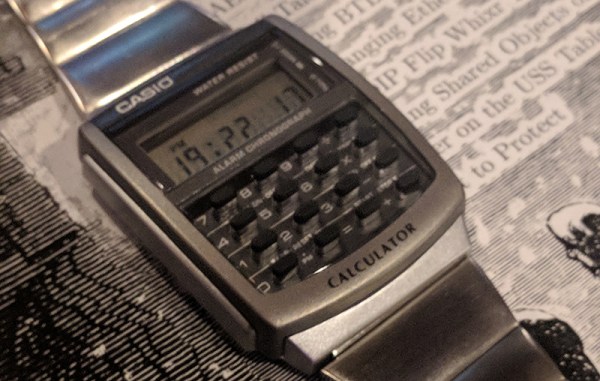Well, this hack has us tickled pink. We love the idea of buying some really cheap piece of technology and doing something amazing with it, and this is a textbook example of that. [davedarko] found the cutest little calculator watch on Ali Express and is working on making a new PCB for it. The plan is to use an ARM processor and Arduino and add a few extras like 24-hour mode and a pink (or potentially RGB) backlight. The new brain will be an ATSAML22G18A, which has an on-board LCD controller and exactly one I/O pin to spare without charlieplexing the buttons.
One of [davedarko]’s primary goals is to keep the LCD and figure out how to talk to it. The first order of business was reverse engineering the watch’s LCD controller by sussing out the secrets from beneath the black blob of epoxy. This was an eye-opening experience as [davedarko] had never worked directly with LCDs before. A strange reading made him bust out the oscilloscope. Long-ish and informative story short, [davedarko] found out that it uses a bias of 1/2 for generating the wave necessary to multiplex the segments and keep the signal alternating. This is definitely one to watch!
We love timepieces around here and have seen all kinds of hacks, especially on Casio watches. Want dark mode? Done. Enable the hidden countdown timer? We’ve got that, too. And have you ever wondered just how water-resistant the F91W is?

